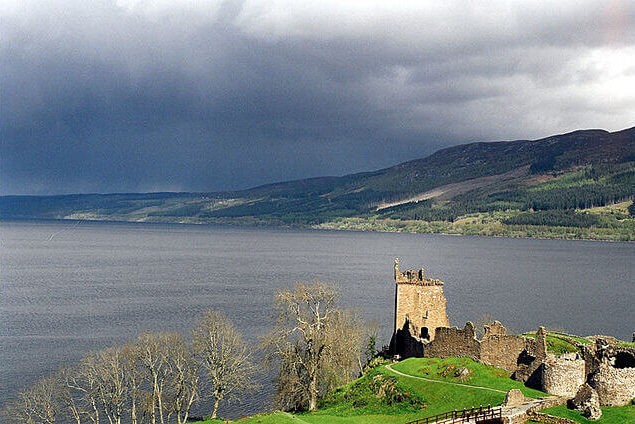
Campaigners are raising concerns about the potential impact of constructing additional power stations on Loch Ness, warning of dire consequences for wild fish populations.
The Ness District Salmon Fishery Board (NDSFB) is urgently calling for a halt on further pumped storage hydro schemes following the submission of plans for a third station.
Collectively, these schemes are projected to manipulate water levels by over two feet, a move vehemently opposed by conservationists.
Scottish Renewables, representing the industry, argues that pumped storage is essential for the decarbonisation of the electricity grid. This technology utilises surplus off-peak energy to pump water uphill into a reservoir, later releasing it through turbines to generate electricity during peak demand periods or when renewable sources are unavailable.
Originally conceived as a means to supplement energy supply during peak demand, pumped hydro has evolved into a vital tool for storing renewable energy.
SSE’s Foyers power station, operational since 1974, currently discharges a substantial 200 tonnes of water per second.
The Red John project, with existing planning consent, was recently acquired by new owners.
Additionally, plans have been revealed for Loch Kemp, a third power station, prompting concerns from Brian Shaw, director of NDSFB, who opposes what he calls an “unregulated gold rush” on the iconic Loch Ness.
He added: “Such dramatic, indeed astonishing, fluctuations in water levels will play havoc with the shoreline ecology, disrupt natural currents within the loch and potentially raise the temperature of Loch Ness.”
Alarmingly, Atlantic salmon numbers in the Ness catchment have been dwindling for decades, prompting their reclassification from “least concern” to “endangered” by the International Union for Conservation of Nature.
An environmental impact assessment of the proposed Loch Kemp scheme suggests that filling all three high reservoirs from empty could lower Loch Ness’s level by as much as 73 cm (2ft 5in), though such an extreme scenario is deemed unlikely.
Despite opposition, Scottish Renewables published a report projecting significant economic benefits from the next generation of pump storage hydro schemes, estimating a potential value of up to £21bn to the economy.
Report author Andrew MacNish Porter says they are a vital component in helping the UK achieve its net-zero targets.
He added: “I don’t think it’s inevitable that pumped storage hydro projects come into conflict with these interests and developers are held to rigorous planning and consenting processes.
“Developers will look to minimise any environmental impact both during the construction phase and the operational phase”
Statera, the company behind the Loch Kemp Storage scheme, expresses disappointment with the petition, highlighting extensive assessments conducted over the past two years, including the publication of their Environmental Impact Assessment alongside the planning application.
“Far from causing problems for water levels in Loch Ness, the opposite is the case. Pumped storage hydro schemes can help tackle the issues being caused by climate change by releasing water during dry periods and storing water to help flood management,” he said.
“The impact of the Kemp scheme is likely to marginally increase the fluctuations in Loch Ness, but no more so than occurs through natural weather patterns today.”
“Loch Kemp offers a range of benefits including better water management, substantial carbon savings, improved energy security and a boost to local jobs. We are happy to discuss the project with anyone who has concerns about it,” he added.
——————————————————————————
At Natural World Fund, we are passionate about stopping the decline in our wildlife.
The decline in our wildlife is shocking and frightening. Without much more support, many of the animals we know and love will continue in their decline towards extinction.
When you help to restore a patch of degraded land through rewilding to forests, meadows, or wetlands, you have a massive impact on the biodiversity at a local level. You give animals a home and food that they otherwise would not have had, and it has a positive snowball effect on the food chain.
We are convinced that this is much better for the UK than growing lots of fast-growing coniferous trees, solely to remove carbon, that don’t actually help our animals to thrive.
This is why we stand for restoring nature in the UK through responsible rewilding. For us, it is the right thing to do. Let’s do what’s right for nature!
Donate today at https://naturalworldfund.com/ and join in the solution!

